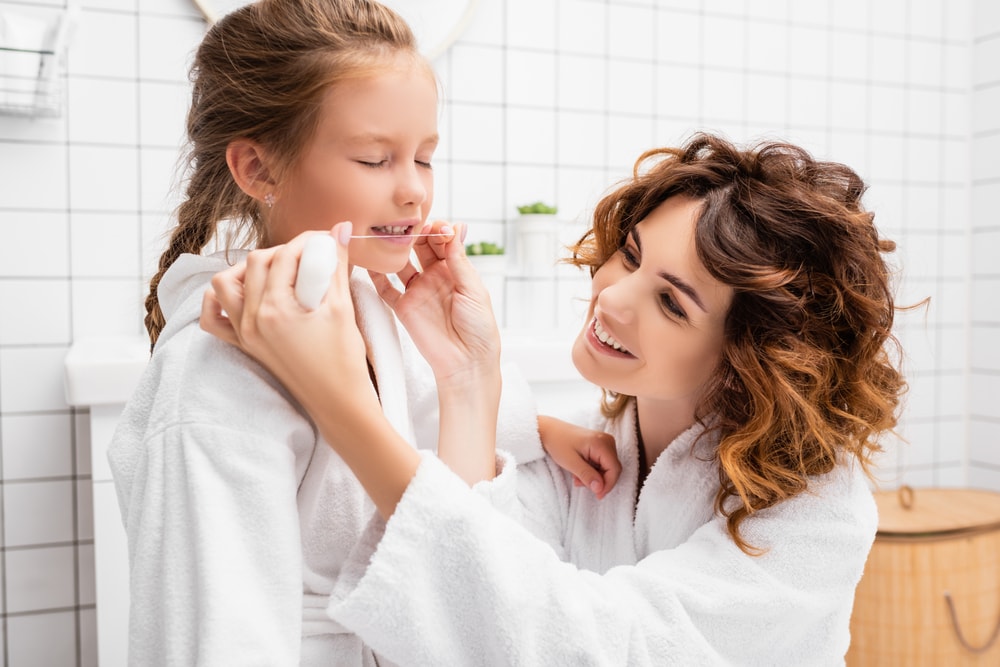Know When to Floss and Use Toothpaste With Your Kids

Experts now recommend that parents use a small amount of children’s toothpaste with fluoride on the child’s teeth as soon as they start brushing, rather than waiting until they are older. Make sure to use a very small amount for little ones.
When teeth first begin to appear, usually at the age of two and under, only a small amount of fluoridated toothpaste – around the size of a rice grain – is needed. If more is needed to complete brushing, use gel without fluoride.
After the age of 2, use a pea-sized amount of fluoridated toothpaste to clean your child’s teeth. For more brushing needs, use gel without fluoride. At this point, encourage your child to practice spitting excess toothpaste into the sink.
Toothpaste helps keep teeth and gums healthy and is an essential part of fighting tooth decay in children.
When your child has only a few teeth, there is no need to floss. As your child grows, they may have adjacent teeth that contact each other, which usually begins around the age of 2 or 3.. At that point, start helping your children to floss their teeth by showing them how to do so and letting them try. Some parents have found the flossing sticks helpful as it can be difficult for a young child to properly maneuver their hands.
Every child will gain the ability to floss well on their own at a different age. Typically, children gain the dexterity needed around the same time they have coordination to tie their own shoes. Even after that point, watch to make sure they get every tooth and help out for hard-to-reach places.
Flossing is just as essential as brushing your teeth. The tight spaces between teeth are perfect areas for bacteria and plaque to build up, leading to inflammation and gum disease over time. Make flossing a part of you and your children’s daily tooth brushing routine.
Gradually getting your child used to taking care of their teeth will set them up for life. Your guidance and example early on can will create healthy habits that will last their lifetime.